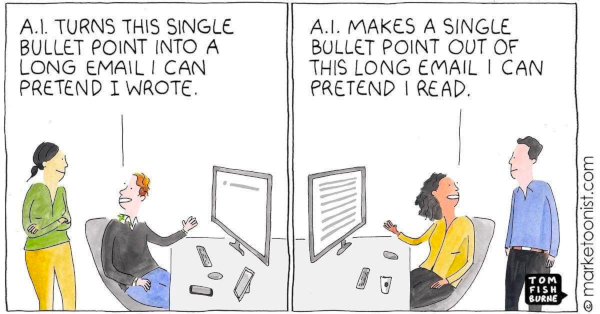It’s been a dry year since my last blogiversary post. I’ve beaten the previous record of only four posts by publishing only two.
I’ve been working on a follow-up post about Stable Diffusion and that other AI thing everyone’s talking about at the moment, but every time I finish up a draft, some new development comes along that I have to include – LoRA, ControlNet, etcetera and so forth.1 At this rate, by the time I have that post ready, ChatGPT may be able to write something better.
Speaking of ChatGPT, in a previous retrospective post, I discussed the fetishisation of content creation as its own end:
A few years ago I read a short ebook that excitedly proclaimed it would teach the reader to write a book in a weekend. From what I recall of the content, the idea was to do a bunch of research on Saturday and then go for a walk on Sunday and narrate your book into a recorder app on your phone for later transcription (perhaps by a gig worker in SE Asia). Bam! You’ve written a book! You’re a writer!
A blog post I read recently proposed getting into the writing habit by assembling articles through (1) copy-pasting a whole bunch of paragraphs from your research about some topic, (2) ordering them and (3) systematically paraphrasing each one. Bam! You’ve written a series of regular blog posts! You’re an influencer!
I question the value of a book written in a weekend or a series of articles assembled through paraphrasing. In an overreaction to a perceived passivity in culture, the act of creation is fetishised even when the product is worthless. Writing down things you learn is often a useful way to properly understand and internalise them, but there’s more to creation than watering down things extracted from elsewhere into a shallow soup. You have to actually bring something of your own to the dish. And that’s hard work that most people can’t do on command and with regularity.
The pointlessness of this kind of empty content is even more apparent in a world where everyone with an internet connection has access to a powerful LLM.2 The writing method proposed above can be entirely replaced with a bit of prompting, followed by light edits. Depending on the output, you may have to manually fix up some hallucination, but ChatGPT can probably help you with that as well. Forget writing a book in a weekend, you can now write a book in a couple of hours. But many things that can be generated by LLMs may not be worth generating.
Source: Marketoonist
ChatGPT has a lot of very real and useful applications such as writing boilerplate code and boilerplate copy. But boilerplate content exists to support something. For this reason, I don’t think LLMs will replace writers any more than diffusion models will replace artists. The most rote and dull forms of both kinds of work will be automated, but someone’s still going to have to guide the process. The most interesting and powerful results in all forms of AI content creation will continue to come from clever human beings guiding and shaping the AI’s output, using methods and workflows ultimately not that different from those of traditional writers and artists.
Despite what you may hear about the coming AI apocalypse, none of these things have their own will or vision. ChatGPT is ultimately just a fancy Markov chain, which requires human input as a starting point.
And that’s why I will continue writing this blog, at a rate of at least one post per year.
-
There is also only so much time you can spend looking at demoniacally misshapen horrors, a large part of the AI image generation workflow. ↩︎
-
Large language model, the class of thing that ChatGPT is. ↩︎
 David Yates.
David Yates.